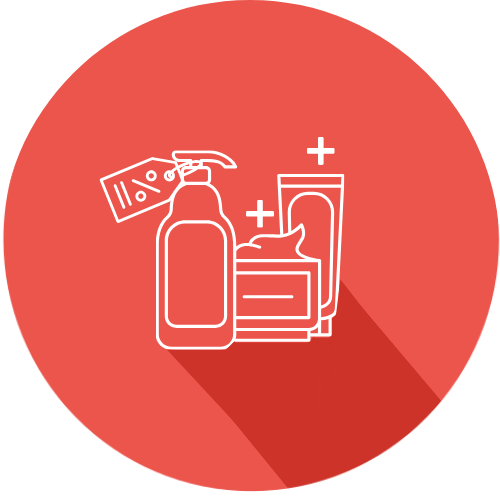When Price Promotions Benefit Neighboring Products too
Relevant topics Archive, Conversion
Consumer psychologists and neuromarketing researchers try to disentangle what makes a product stand out on a shelf. With eye tracking, we can now measure even the most subtle attentional effects.
The major factor driving attention is hardly surprising: shelf position. For example, eye tracking studies reveal that areas slightly below eye level vertically, and in the middle of a shelf segment horizontally, constitute premium shelf real estate that demand more shopper eye balls and higher conversion rates.
Interestingly, attention is not only determined by shelf position, but on a more subtle level also by the neighboring products. For example, a product that’s placed right next to the market leader tends to benefit greatly from attentional spillover. It simply has a higher chance of being discovered and therefore to end up in the customer’s shopping basket.
The Promotion Proximity effect: price promotions increase attention to other products as well
It’s no surprise that price promotions grab huge amounts of attention. Our brains, always eager to point us towards a good deal, automatically attend to cues indicating a price promotion, such as a sign, price label or sticker. Eye tracking therefore clearly shows that products with a price promotion receive more attention than that some product would get regularly. Furthermore, products that are placed in the vicinity of the promoted product enjoy some attentional spillover effects as well.
However, little was understood of how these attentional dynamics affected actual purchase behavior. Does the increased attention to the promoted product’s neighbors result in higher total customer spend? An optimistic hypothesis would be one of synergy: where the attention for the promoted product results in additional sales for both the promoted product as well as neighboring products, thus having a positive net benefit for the store’s bottom line. The pessimistic expectation, however, anticipates that the increased sales for the promoted product will simply eat into the sales of the non-promoted products, which in turn may even cost the store money.
Who is right? A recent study by Kan et al., (2023) has finally furthered our understanding of price promotions’ effects on other products.
Price promotions can both increase and decrease sales of other products
The researchers discovered that price promotions can be both detrimental and beneficial for the sales of neighboring products. Which of the two effects occurs depends on the degree of substitutability of the products. Or stated in simple terms: are the products alike or are they different?
When the products are highly interchangeable, such as two different brands of neutral yoghurt, the increased sales for the promoted product will directly cut into the sales of its non-promoted neighbor. This is clearly indicated by actual sales data: a 1% price reduction lowers the sales rotation of the proximate non-promoted products by .25%.
However, in many cases, products are not interchangeable, because they serve different needs. For example, this is the case when a neutral yoghurt (healthy goal) is placed alongside a sweet and tasty dessert (enjoyment goal). In this situation, not only the promoted product will rise in sales, but the other product gets to go along for the ride. Here, the data shows that a 1% decrease in the price of the promoted product results in a .10% increase in sales of the non-promoted neighbor. Everyone wins.
For shopper marketers, these findings have clear implications. For retailers, it is beneficial to display promoted products together with products that are somewhat dissimilar. That way, more products will jointly benefit from the single promotion. Alternatively, from a specific brand’s perspective, it may be attractive to be on promotion directly next to its direct competitors, as this will simultaneously increase the sales numbers of their own brand while decreasing sales of the competition.
Costco successfully implements this psychological effect by offering unique items at a reduced price across the store. This ‘trains’ shoppers to enter the store in search of deals, as if on a treasure hunt (The Wall Street Journal, 2021). As these deals are scattered throughout the store, customers finding them will increase their exposure to neighboring products along the way, which benefits overall sales even if they are not even interested in the deal product.
When does the promotion proximity effect occur?
The occurrence of the promotion proximity effect only happens when attention to a promotion results in extra attention for the surrounding non-promoted products. The researchers have identified various factors that get in the way of the promotion proximity effect:
- Categories with very attention-grabbing product packages, as these packages will overrule the more subtle promotion proximity effect
- Categories that have a high percentage of planned purchases
- Individual differences: especially shoppers that are willing to get the best deal and scan many options within the assortment are less sensitive to the promotion proximity effect, because their consideration sets are broader by default

